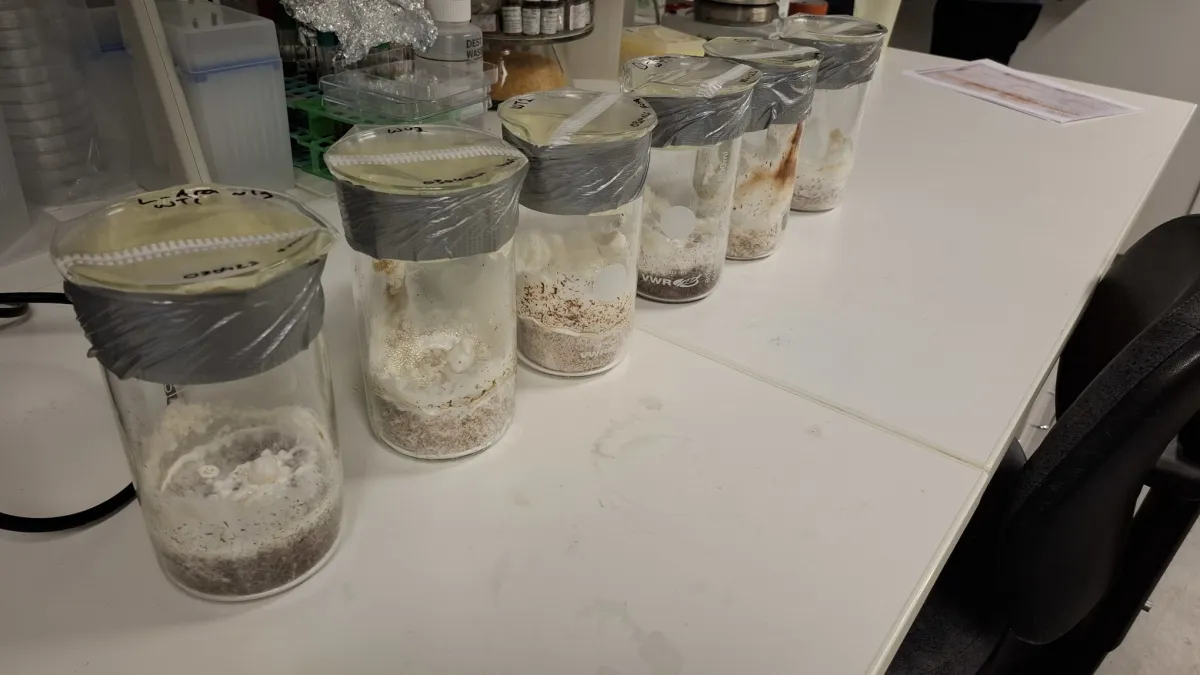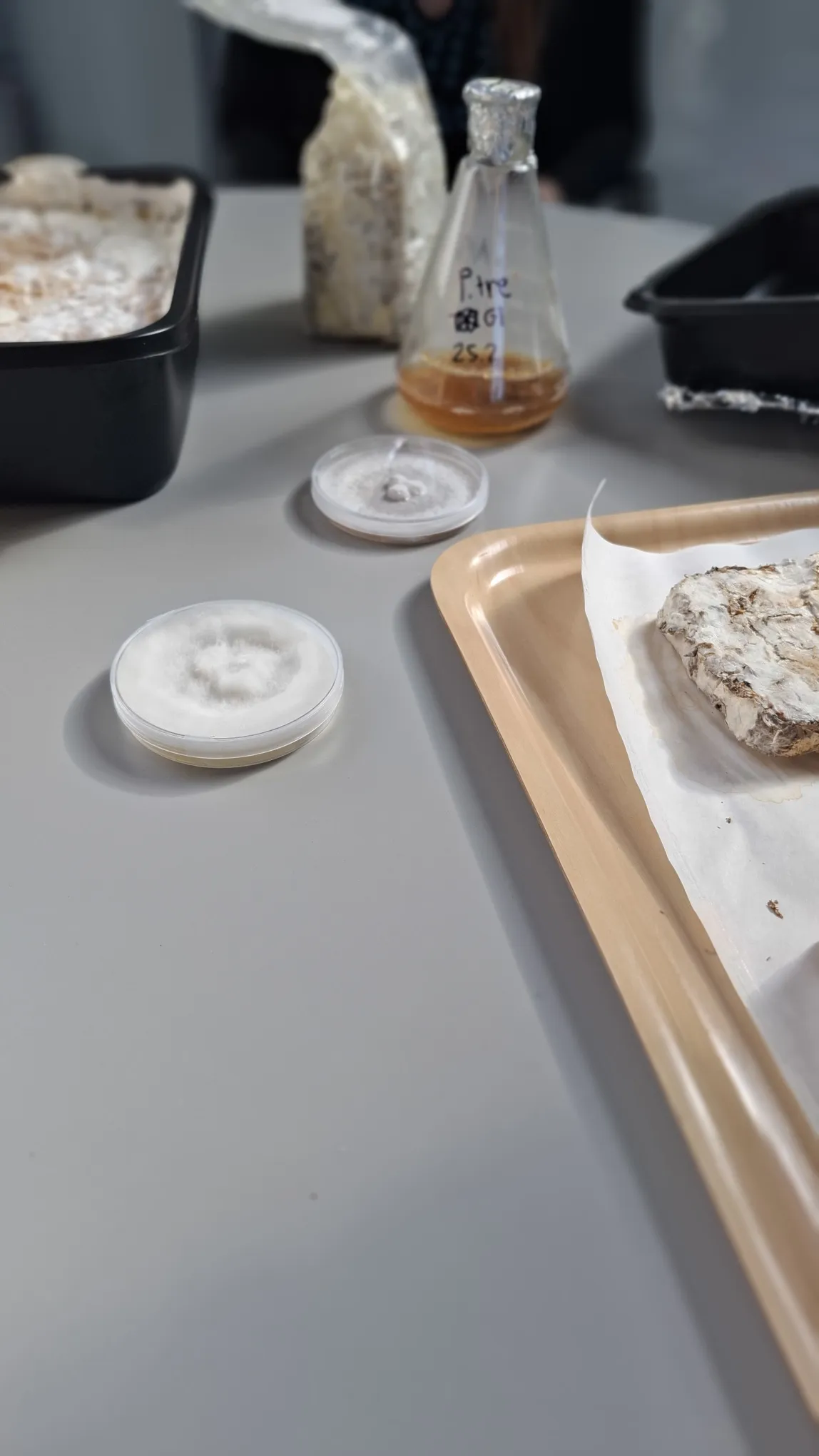International Workshop on Myceliated Composite Materials
Text by Tuula Jyske, associate professor of wood material science, and Nugrah Fadillah, master student of microbiology.
The partnership between the University of Helsinki, Aalto University, and KU Leuven, Belgium, brought together experts in material science, fungal biotechnology, architecture and design, biofabrication, and industrial utilization for a one-day workshop held in April.
The seed-funded project, MyCell, is a collaborative initiative aimed at valorizing underutilized sidestreams from paper and cardboard manufacturing as substrates for Basidiomycete fungi. When these fungi digest lignocellulosic materials, their mycelia form dense networks among the particles, creating a lightweight composite that can be customized for a range of applications.
Throughout the workshop, participants shared insights on the availability of potential substrate sources from industry and municipal waste streams, with input from both researchers and industrial partners. We also reviewed global case studies showcasing the successful use of biofabricated mycelium-based composites (MBC) in pavilions, furniture, and architectural elements. Architects considered how concepts like cardboard housing could be reimagined using MBCs with added functionality and aesthetic value.
Beyond theoretical discussions, much of the dialogue centered on the practicalities of scaling up MBC production within the EU. Collaborations with industry and municipal waste management institutions helped identify several promising sidestreams for large-scale implementation, while others were flagged for further study. Discussions with architects and engineers offered critical insight into potential markets, applications, and value chains, from material collection and processing to end users and distributors. At the same time, conversations with forest industry representatives opened doors for future collaboration to explore the untapped potential of wood-based industrial byproducts.
These collaborative efforts align with broader EU sustainability objectives and the circular economy strategy, especially in developing locally sourced, biodegradable alternatives to synthetic materials. As one participant put it: “It’s not just about growing materials—it’s about growing systems of collaboration.”
Altogether, the workshop was both productive and inspiring, laying out value propositions and critical research directions. The next steps include lab-based testing of selected sidestreams, with preliminary results to be presented at Helsinki Design Week.
In the autumn, the group will begin drafting a Horizon Europe (HEU) application. If you are interested in getting involved—whether in research, testing, or application development—feel free to contact us.

